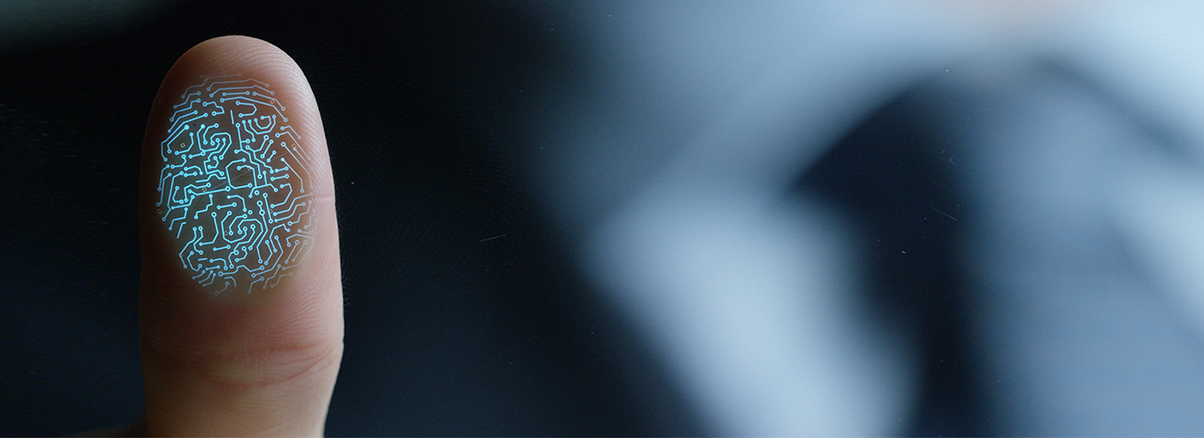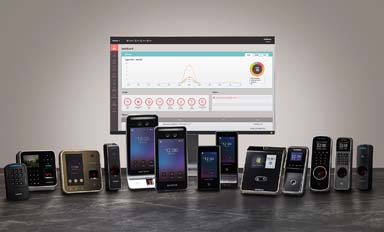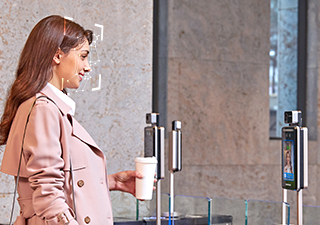PÓLIZA DE GARANTÍA DE
- PRODUCTOS
- PLATAFORMA
- Biostar2 (Visión general)
- Biostar2 AC (Sistema centralizado)
- Biostar2 AC (Sistema distribuido)
- BioStar 2 TA
- Acceso Móvil Suprema
- Suprema CLUe
- SOLUCIONES
- SOPORTE
- ACERCA DE
- Blog de noticias y artículos [ES]
- Comunicados de prensa más recientes de Suprema

Fingerprint recognition is a secure and convenient technology that has become common and widespread, not only in smartphones, but in our everyday lives as well. However, the recent global outbreak of COVID-19 is raising questions about how safe using fingerprint authentication really is as touching the sensors can potentially spread viruses. Based on 20 years of first-hand experience witnessing the development of fingerprint recognition technology and the market, we would like to discuss common perceptions regarding the safety and use value of the technology.
There are three parts to the concerns over the safety of fingerprint recognition technology:
- Can we say fingerprint recognition is safe?
- How much risk does fingerprint recognition entail?
- How should we perceive the use value of the technology?
A short answer to the questions above: It’s difficult to claim that fingerprint recognition sensors are completely safe from spreading viruses. That said, fingerprint recognition sensors are less likely to be contaminated than other surfaces such as door handles and elevator buttons. Therefore, sensible use of the technology can help to significantly prevent the spread of the virus. The rest of this article provides more details on the points laid out above.
Safety of fingerprint recognition
Our everyday lives are surrounded by many different types of surfaces that come in contact with countless people. These surfaces include the poles in buses and trains, elevators, ATMs, buttons on copy machines, door handles, handrails, tables, credit cards and money, to list but a few. In the wake of the COVID-19 outbreak, numerous news articles have claimed that there is a risk of infection via these commonly touched surfaces.[1] Reports say that the virus can survive for anywhere between hours to days, depending on the type of surface it lands on. Fingerprint recognition requires the users to touch the sensor. The contamination level of this surface is as high as that of door handles according to a study.[2] This indicates that fingerprint recognition sensors can act as a medium to pass the virus via contact just the same as any other commonly touched surfaces. Yet, another study suggests that disinfecting sensor surfaces with alcohol could significantly lower the possibility of virus transmission, if not completely remove it.[3]
Risks of using fingerprint recognition
The virus’s possible transmission route starts from the carrier’s nose or mouth and moves to the fingers, then to the fingerprint recognition sensors, from there to another person's fingers, and finally to that person's face(eyes, nose, or mouth). The risk of spread varies by the size of the surface touched, and the duration and pressure of the touch. Fingerprint recognition sensors have a very small contact area, with weak pressure applied and a touch duration of under one second. Therefore, the risk of virus transmission is significantly lower when compared to other surfaces like door handles.
On top of this, users of fingerprint sensors are limited to known, authorized people whereas other commonly touched surfaces such as commuting poles on public transport are touched by countless random people. However, these users also share common areas and objects such as copy machines and meeting room tables. As such, implementation of a risk management that is designed specifically for this kind of group of users is required. Some measures to be considered include checking body temperatures when coming into work and taking turns to work from home. Biometrics, including fingerprint recognition, can actually help contain the transmission of viruses by allowing only a limited number of authorized people to enter common areas.
Perceptions around the use of fingerprint recognition technology
In our day-to-day lives, we unwittingly come into contact with numerous commonly touched surfaces. Fingerprint recognition, on the contrary, only involves intended, mindful contacts, which can naturally lead to timely containment efforts such as using hand sanitizer. It is already well-known that using hand sanitizer or washing hands can effectively prevent virus infection. In a pandemic like the one we now find ourselves in, we can keep ourselves safe by keeping hand sanitizer next to fingerprint recognition sensors and directing people to use it after touching the sensor. Encouraging people to use hand sanitizers after fingerprint recognition as they come into the office also helps with general hygiene and preventing infection.
The outbreak of COVID-19 is threatening aspects of our lives that we have been taking for granted. At the same time, it has elevated our fear and concern to an unnecessary degree. Instead of letting fear grip us, clearly understanding the safety level and risk factors of the technology and using it wisely can be a way to combat the spread of the virus.
Attibute to: Brian Song, Ph.D. Chief Research Officer, Suprema Inc.
*References:
[1] https://www.businessinsider.com/photos-objects-wary-what-to-do-coronavirus-spreads-2020-3#finally-the-best-thing-you-can-do-is-wash-your-hands-often-and-thoroughly-11
[2] https://news.uns.purdue.edu/x/2007b/071010ElliottGerms.html
[3] https://academic.oup.com/jtm/article/15/5/335/1818880













